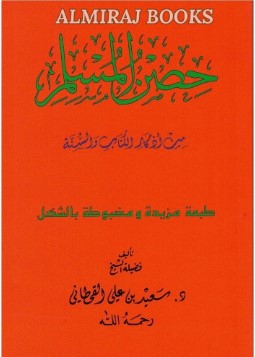The “Interpretation of Dreams” by Ibn Raashid Al-Bakri Al-Qafsi is a deep and spiritually dense work on the science of dream interpretation in Islamic tradition. Unlike contemporary dream dictionaries or general spiritual publications, this book is based in Islamic scholarship, interweaving Qur’anic quotations, Hadith, and historical information.
Ibn Raashid Al-Qafsi, a lesser-identified but highly respected medieval Islamic scholar, comes at the topic with seriousness, rigor, and genuine interest in maintaining proper Islamic perspective in the matter of dreams. His writing is reflective of an era when scholars did not view dream interpretation as entertainment or superstition, but rather as a serious aspect of spiritual contemplation and direction.
This book provides contemporary Muslims with a window into an interesting aspect of Islamic knowledge that tends to be neglected in modern times.
The Role of Dreams in Islam
Dreams have always been a priority in Islam. The Prophet Muhammad ﷺ described a good dream as “one of forty-six parts of Prophethood.” (Bukhari). In another report, he ﷺ asserted that true dreams after prophethood are still a source of glad tidings for the believer.
Ibn Raashid’s work is built on this prophetic basis. He stresses that dreams are not to be taken lightly and interpreted capriciously. A dream will carry spiritual realities, divine inspiration, or warnings only when it is approached using correct knowledge, piety, and understanding.
In this book, the author outlines the types of dreams mentioned in Islamic tradition truthful dreams, dreams influenced by one’s thoughts or emotions, and dreams from Shaytan. He provides frameworks for how scholars of the past approached each type, helping readers discern which category their dreams might fall into.
Deeply Rooted in Islamic Sources
What is special about Interpretation of Dreams is its firm grounding in the Hadith and Qur’an. Instead of presenting speculation or intellectual concepts, Ibn Raashid Al-Qafsi has recourse to factual incidences in the Prophets’ and Companions’ lives.
He describes the dream of Prophet Yusuf (Joseph) عليه السلام at length the Qur’anic most popular dream story. The symbolic meaning of the sun, moon, and stars prostrating themselves before Yusuf sets the standard for dream symbolism to be applied throughout the book.
The author describes how scholars learned rules of interpretation from one such dream, highlighting the importance of patience, wisdom, and context. Through such illustrations, the book teaches more than dream meanings it teaches how to think about dreams in a religious and responsible manner.
Symbolism: Reading Between the Lines
One of the most fascinating aspects of Ibn Raashid’s work is his study of symbols. Unlike current interpretations that impose strict definitions, he cautions that symbols can vary in interpretation depending on the condition, history, and surroundings of the individual. A lion in a dream may symbolize power for one individual, while fear or oppression for another.
The writer clarifies that dream interpretation is not a matter of cracking an arithmetic problem. It is a matter of knowledge of Islamic teachings, human psychology, and above all the spiritual condition of the dreamer.
His thoughts prompt the reader not to make conclusions from dreams without knowledge and piety. Dreams, to him, are messages that one can only accurately read in the light of revelation and honest contemplation.
Guidance, Not Obsession
Ibn Raashid Al-Qafsi similarly warns against relying on dreams too heavily. He reminds the reader that though dreams can be informative, they must never be used as a replacement for the Qur’an, Sunnah, or Shariah. A person’s dreams do not constitute evidence in Islamic law or a foundation for belief if they do not adhere to the principles of the religion.
This balanced philosophy is what distinguishes this book from mystical or folklore-based explanations. Ibn Raashid imparts that dreams may assist a believer’s path, but never direct it. Our faith is in Allah, our directive from the Qur’an, and our actions assessed by sincerity not symbols within the night.
A Book for the Serious Seeker
This book is not composed for flip-browsing. It is intended for the committed student of knowledge, seeker of spirituality, or reader interested in comprehending the Islamic perspective on dreams beyond the superficial definitions. Its Arabic tone is luscious, its concepts deep, and its approach disciplined.
For contemporary readers, particularly those who experience a blend of spiritual exploration and Islamic genuineness, Interpretation of Dreams provides insight. It doesn’t only describe what dreams symbolize it educates one on how to interpret them with spiritual maturity.
If you’re a scholar, a student, or a common Muslim who is interested in your dreams every night, this book encourages you to treat dreams with respect, contemplation, and accountability.
A Window Into the Unseen
All souls dream. Some lose them. Some ignore them. But for those who retain them and are attracted to their essence, this book serves as a reliable companion. Ibn Raashid opens a window to the invisible a realm where symbols, feelings, divine messages, and inner thoughts converge.
By merging religious information with veiled wisdom, he illustrates that dreams can be a reflection of one’s soul, a message from Allah, or just an echo of our day. But regardless, they are worthy of introspection.
His work provides reassurance for those who have experienced vivid dreams, and insight for those who are afraid of nightmares or muddled symbolism. It quietly reminds the reader that Allah is ever the commander, and that all message dreamed or uttered comes back to Him.
Buy now : Interpretation Of Dreams By Ibn Raashid Al-Bakri Al-Qafsi









